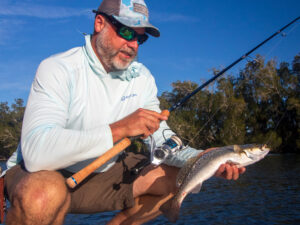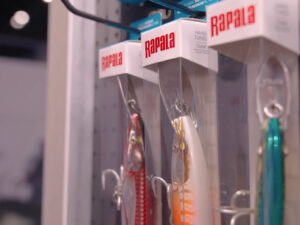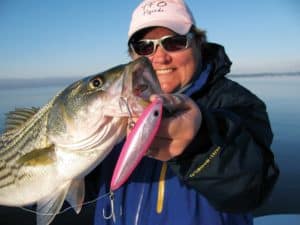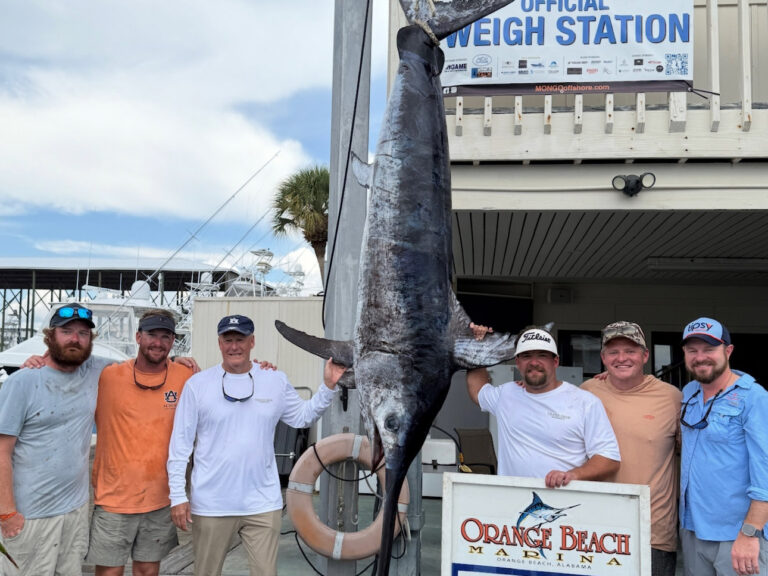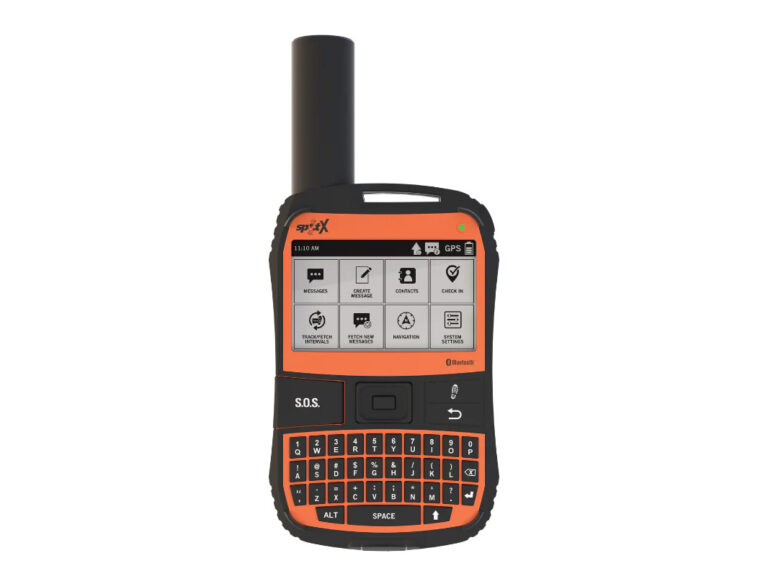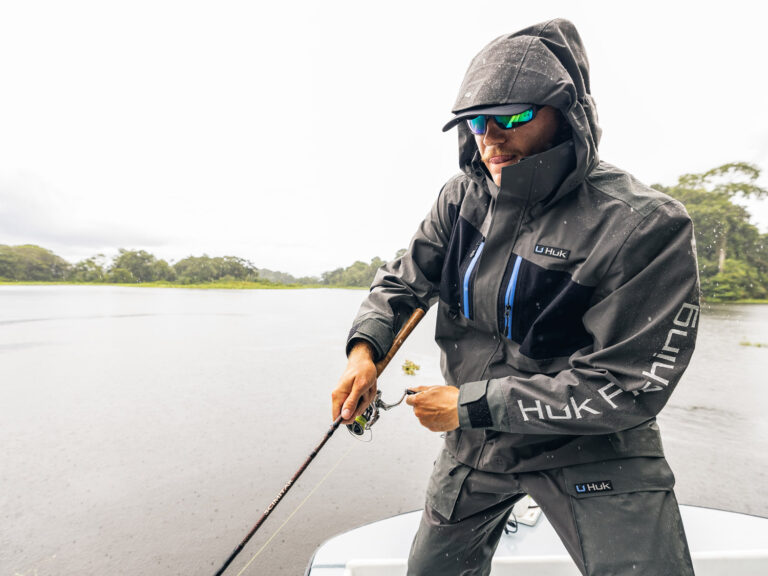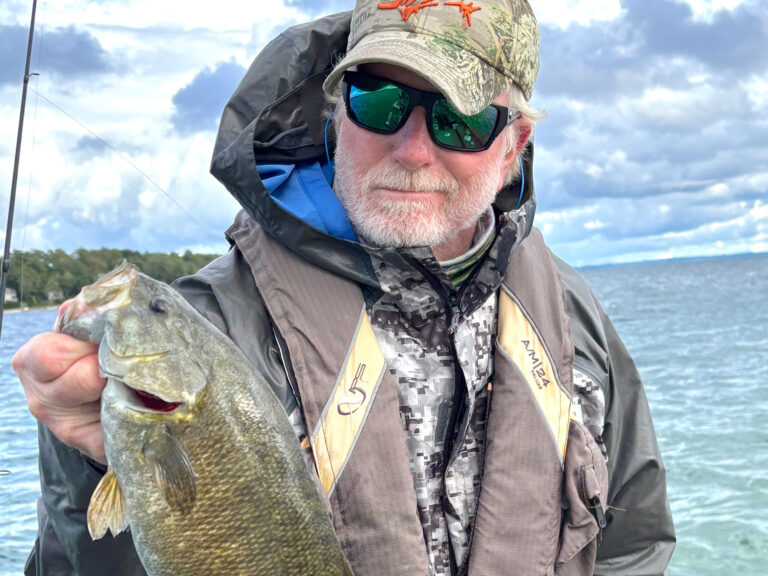A Fish With A Big Eye
QUESTION: While bottomfishing in Zihuatanejo, Mexico, my 8-year old friend Henry Bustamante pulled up this interesting little fish from about 80 feet of water. Locally, they’re said to be good eating, but this little one was released to fight again. Please help us identify this fish.
— Capt. Mathew Fluharty, Virginia Beach, Virginia

ANSWER: Nice photo, Matt! The fish is a short bigeye, Pristigenys alta, and it’s one of the species of bigeyes (family Priacanthidae) found in your area. It’s also arguably the most spectacular, due to its color and the relative size of its pelvic fins. While juvenile short bigeye may be found at or close to the water’s surface, adult short bigeye commonly inhabit depths to 650 feet. Short bigeye reach a maximum length of around 1 foot, and, yes, they are good eating, although no fishery targets this species. Juveniles make interesting additions to marine aquariums.
— Ray Waldner
A Texas Goby
QUESTION: The lower Nueces River at Corpus Christi, Texas, has given up a strange fish. This was running with some 6- to 8-inch mullet. After 30 minutes out of the water, it was still alive. I kind of think someone turned it loose from an aquarium, thinking they were doing nature a favor. Any idea what it is?
— Buddy Toepfer, Corpus Christi, Texas
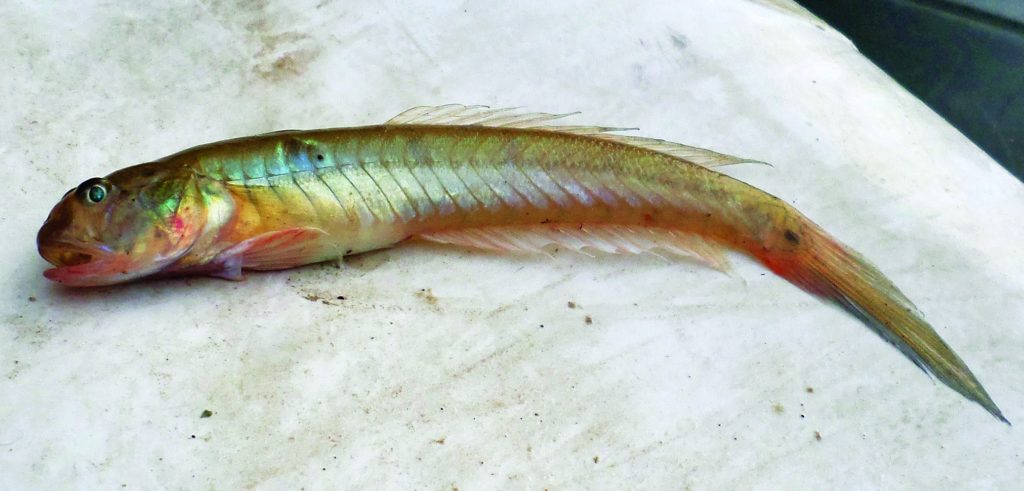
ANSWER: Well, Buddy, no one turned this guy loose from an aquarium. A common but rarely seen resident of that Nueces River estuary and similar habitats, it’s known as the highfin goby, Gobionellus oceanicus. Until recently, the Gulf and South Atlantic population was thought to be a distinct species known as the sharptail goby, G. hastatus.
The goby family is immense, with more than 2,000 species worldwide, and many thrive in incredibly diverse habitats. Members of this family are recognized by their pelvic fins, which are fused to form a suckerlike disc that helps anchor them in currents. Some even use this feature during spawning migrations to scale waterfalls in a series of forward leaps, punctuated by a break in between.
Even though the highfin tops out at only about 7 or 8 inches, it’s one of the larger gobies. Most are less than a few inches. But what they lack in size, they compensate for in beauty, often with electric blue or striking yellow colors. Because of this, they are favored in the aquarium trade. So you weren’t too far off-base thinking this fellow was an aquarium release, although it’s devoid of the vivid features of many of its close cousins.
— Bob Shipp
A California Perch
QUESTION: While we were fishing off Southern California’s Santa Barbara Island in about 100 feet, we foul-hooked this fish on a jig. We commonly catch many different species in this area — even the occasional sarcastic fringehead — but I have never seen one of these, nor has my friend who caught the fish, though he has been fishing the island for more than 30 years. Can you ID it for us?
— Peter Corselli, La Habra Heights, California

ANSWER: That dusky beauty is a pile perch, Damalichthys vacca. These schooling fish live on nearshore reefs (mostly in depths of 10 to 120 feet) from British Columbia to southern Baja California, and reach a weight of about 4 pounds, though the IGFA all-tackle record is only 2 pounds, 4 ounces (Monterey, California, 2013). While pile perch are taken with some regularity from piers and rocky shores, because of their food preferences — primarily hard-shelled animals like whole small mussels, barnacles and crabs — anglers’ catches do not reflect how very common they really are.
When I was a kid fishing on the Santa Monica Pier, I would be driven to distraction watching them swimming around pilings, ignoring everything I threw at them. Finally, an elderly woman took pity on me and showed me how to catch them. She would bind up a mussel clump in wire mesh, attach leaders with hooks to the wires, and place whole small mussels on each hook. The entire unit was then hung by a rope off the pier, with the rope draped over a sturdy wire coat hanger. When a pile perch ate one of the hooked mussels, the coat hanger would bounce up and down.
— Milton Love
A Polychaete Worm
QUESTION: While fishing 60 miles offshore of New Jersey for sea bass on the wrecks, I noticed the bass spitting up these ugly creatures. I’ve also seen red hake (ling) spitting them up. Some people tell me they are anemones. Is that correct? They were like little hairballs, soft to the touch, not spiky.
— Nick Honachefsky, Mantoloking, New Jersey

ANSWER: Anemones? No. Hairballs? Getting closer. In fact, your furry critter is a sea mouse, Aphrodita hastata, and it’s nothing more than a polychaete worm. Those segments on the underside are a good clue. If you look more closely at the “fur,” you’ll notice that the hairs (aka setae) vary from patches of very fine, iridescent hairs to more stout, dark ones. The mice typically reach lengths of 6 inches (less typically 9 inches) and live on mud bottoms from 6 feet to much deeper. Getting information on fish diets is not always easy, and data on prey items are not readily available. Although black sea bass and red hake are both known to eat “worms” (polychaetes, at least in the case of hake), I can find no feeding studies that specifically note the sea mouse as important (or even occasional) prey, so your observation is a valuable one, scientifically.
— Mike Fahay
A Rock Cod from Thailand
QUESTION: The waters in the Gulf of Siam are home to all sorts of cod and groupers, some very colorful. I caught this on a piece of cut bait while fishing near shore on an old wooden trawler. I’d love to know more about it.
— Jean-Francois Helias, Bangkok, Thailand, Fishing Adventures Thailand

ANSWER: This cute little fellow is a bluelined hind, Cephalopholis formosa, also known as the bluelined rock cod. Bluelined hind are one of the smaller members of the grouper family Serranidae, growing only to around 12 or 13 inches long. They occur on coral reefs throughout the tropical Indo-Pacific, from western India to the Philippines, as far north as southern Japan, and as far south as the coral atolls off northwestern Australia (and possibly the northern Great Barrier Reef).
This species is easily recognized by its striking coloration, with numerous blue lines running horizontally along the head and body, superimposed on an orange-brown background. Like other serranids, bluelined hinds are protogynous hermaphrodites, which mature first as females before becoming males.
Due to its small size, the species isn’t really a sport-fishing target, but because it’s pretty, it’s a popular species for marine aquariums. In aquariums its ambush predator behavior becomes apparent, as it uses coral cover as a place from which to ambush prey with a quick burst of speed. Aquarium keepers quickly find out the bluelined hind will eat virtually any fish or crustacean it can fit inside its mouth. Because of this, these aggressive little fish are best suited to bigger aquariums stocked with larger fish.
— Ben Diggles

